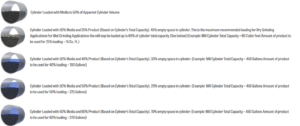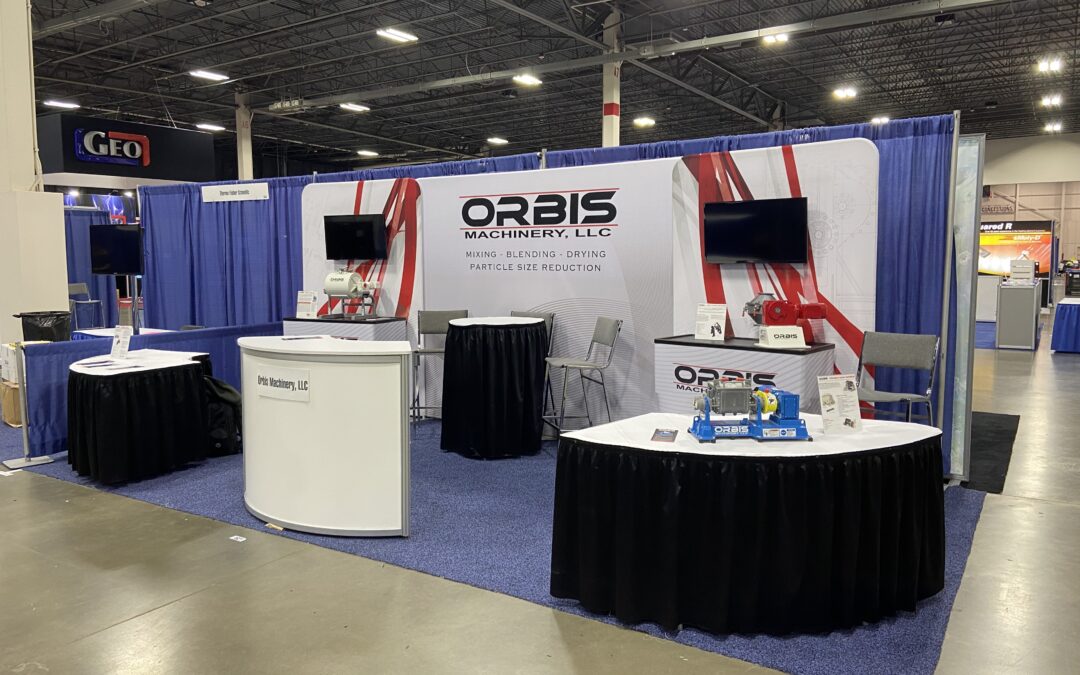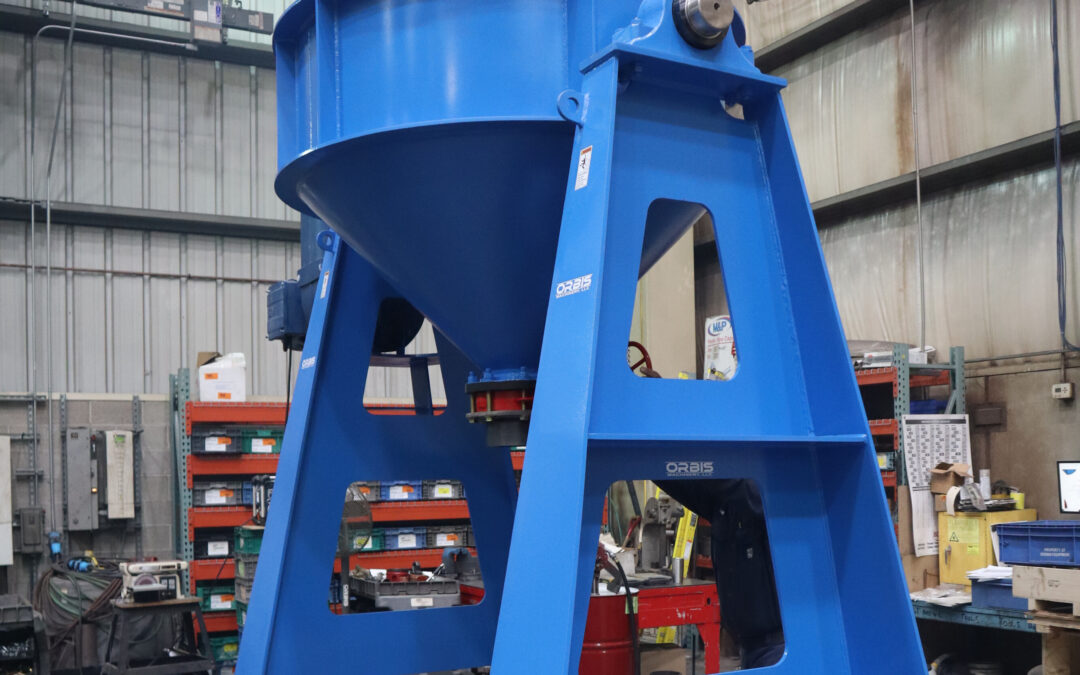Action inside a Ball Mill drum is not a haphazard process. Stirring is not random nor is the throwing of the charge. There is a very specific operating speed for the most efficient grinding. Depending upon the Mill’s speed, there is a point in which the load along the wall of the cylinder will break free and the grinding media will begin to cascade through several layers of the material. This breaking point is affected by several factors: speed of mill, amount of material, amount of grinding media, and viscosity in the case of wet grinding.
Speed of Mill
Back in the old days, operating speeds where obtained through trial and error. Now, we are able to determine practical operating speeds by using the formula 54.19 divided by the square root of the radius in feet. Faster RPM are required for smaller mills to reach critical speed.
To minimize any grinding or dispersion issues, we aim for the cascading action discussed prior. The most desirable angle to accomplish this falls between 50 to 60° from horizontal. The lower end of this range applies to wet grinding applications for soft materials. The higher break point is reserved for harder wet grinding materials such as enamel as well as dry materials. This angle of break is also determinate upon the size of the mill. Since grinding actions in a larger mill are more severe than that of a smaller mill, the angle of break should be lower for the larger Mills than the smaller.
Media and Product Loading
For best results, the Mill should be filled half full with grinding media. While some operators choose to go slightly above this amount to compensate for wear, we recommend a limit of 5%.
NOTE: With media load at 50%, voids are created equal to 20% of cylinder volume. These voids are filled when product is loaded into the mill. Mills can be loaded by volume or by weight based on product’s bulk density.
Type of Grinding Media
Two types of grinding media are most commonly used: porcelain and metal balls.
Porcelain balls are made of a pure white ceramic material that due to its vitrified body and high density, will not become damaged while in use. In recent years, their quality has improved immensely and they are now used exclusively in a number of industries.
Despite a rough start in the industry due to contamination issues, metal options have made vast improvements since they were first introduced. Though there is a number of metal media options, steel balls are used far more often than most as they complete grinding jobs fast than any other available media.
Size of Grinding Media
One of the most common reasons for complains and faulty operations falls on the size of the grinding media. We recommend that the smallest possible media be used in all cases. When optimum media size is discovered in a laboratory sample, the same media should be used regardless of mill size. Small media is recommended as it provides more grinding contacts than larger media, which in turn results in quicker grinding. The smaller voids also limit the size of particles that can occur there. The largest drawback of large media that is alleviated with a smaller option is that of excess energy. Oversized media often develops more grinding energy than the job requires. This excess energy does nothing other than create heat and wear down the lining and media. Though there are numerous benefits to a smaller grinding media, there is one drawback. Due to increased surface tension in the small voids, discharge takes somewhat longer. This disadvantage is far outweighed by the faster grinding times.




